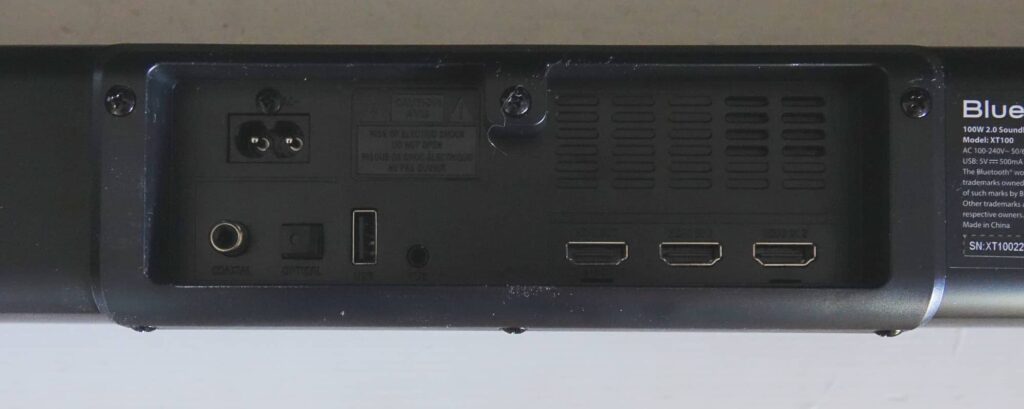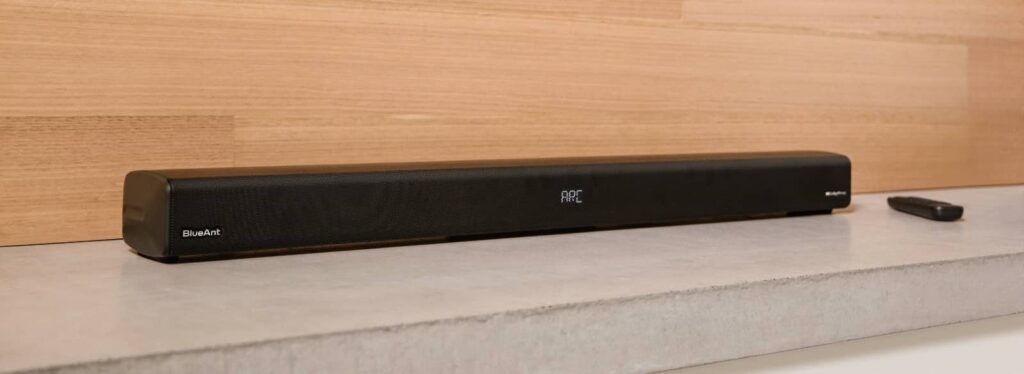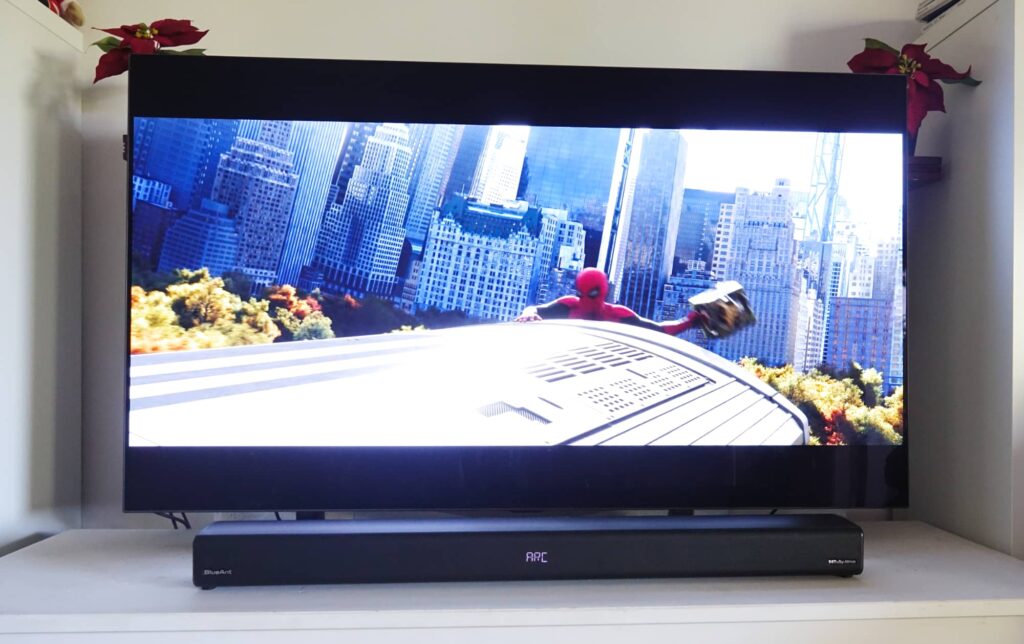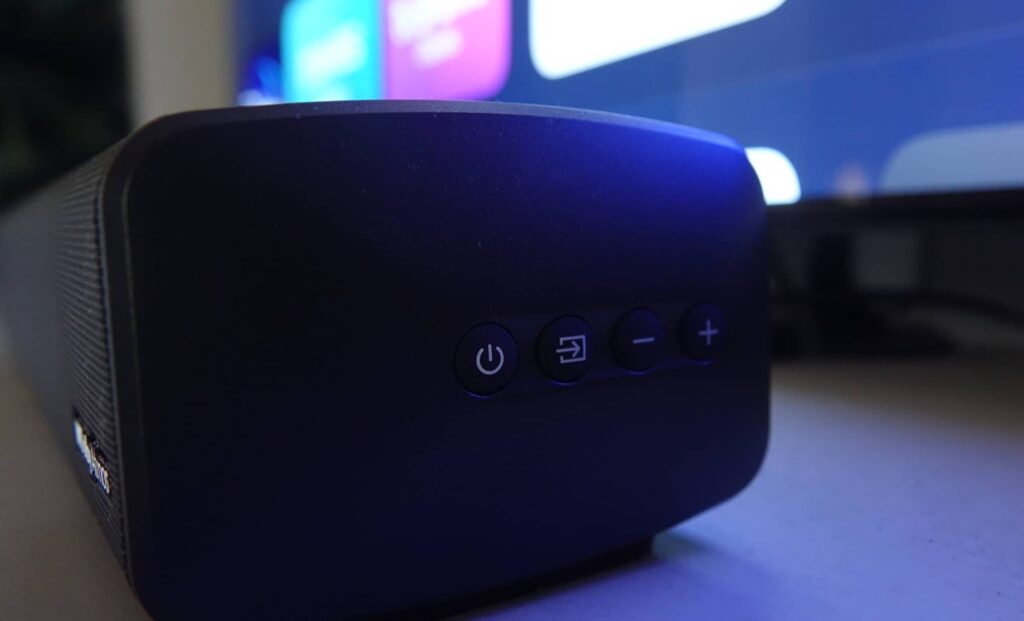Quick review
The good
The not-so-good
Upgrading your TV’s sound isn’t always inexpensive, but that’s an area an Australian brand is tackling, as the BlueAnt XT100 tries to show what you can get for below $500.
Australia has a few sound brands spread out over a variety of areas. We have Rode for microphones and headphones, plus Nura and Audeara for headphones that can adapt to your hearing, and there are even brands that specialise in cost-effective sound.
BlueAnt is one of those, and it’s one of those companies that seems to specialise in sound at a solid value. We’ve seen great earphones from BlueAnt in the past, and if you’ve looked into party sound with a friendly price, there’s a good chance you’ve glanced at one of BlueAnt’s speakers, as well.
But this year, the company has been toying with another space for value-driven sound: TV sound. To that end, BlueAnt has found its way to the humble soundbar, releasing a model that promises Dolby Atmos for well under where we typically see Dolby Atmos soundbars pitched. Is the $349 XT100 a grand slam for what you pay, or do you need to hit higher for something better?
Design and features
First up, there’s the design, and if you’ve seen a soundbar before, you’ve seen the BlueAnt XT100.
A long piece of plastic with some metal grills holding two 50 watt speakers in a two-channel configuration, this is a 2.0 soundbar with Class D amps and some built-in bass handling, plus support for Dolby Atmos using the virtualised style of the technology.
Built for movies and TV shows, the soundbar includes two HDMI inputs with an HDMI out that also works on eARC, so if you still plug those HDMI plugs to your TV or maybe to a light-changing Philips Hue box, the XT100 can also work as an audio-receiving channel on the output HDMI connector. And if you have an older TV and only want to use optical or coaxial, those ports are here, too, alongside an auxiliary jack and support for Bluetooth audio, should you want to use your phone to play back audio. There’s even a USB port for loading MP3s off a stick.
You get a reasonable amount in the box, with the obligatory power plug alongside an HDMI cable, a remote, an auxiliary cable, and surprisingly a mounting bracket with screws if you want to mount the speaker to the wall, and not leave it under your TV like most people will.
In-use
Using the XT100 isn’t complex, thanks to a fairly obvious remote, though the controls you have available aren’t wide and varied.
You’ll find obvious port changes for auxiliary, USB, HDMI, optical/coax, and even Bluetooth, should you choose to use the sounder as a wireless speaker, and there are basic controls for volume, bass, and treble here, plus four presets to match your sound to: voice, sport, movie, and music. That’s about the limit of your control.
There are some controls on the right edge of the soundbar if you lose the remote, but they don’t do much more than volume, source changing, and turning the soundbar on and off.
BlueAnt provides you a “vertical surround” button on the remote to tweak the sound of your dimensional Atmos experience, but it basically consists of on and off, and you’re not changing the vertical sound dramatically, more just whether the timing makes your head think it’s actually vertical. It’s not, but we’ll get to that in a moment.
Performance
You see, the BlueAnt XT100 is another of those Dolby Atmos soundbars that can make you feel like you’re experiencing the sound in three dimensions: surround and up. That’s the theory, anyway.
With only two channels to work with, the BlueAnt XT100 is working at a slight disadvantage compared to the more complex soundbars that can fire sound out and up, which is how proper Dolby Atmos soundbars work. They’ll fire a surround sound both in the front and at the side, and then a sound using up firing speakers that can bounce on your ceiling to create the sense of dimensionality that Dolby Atmos (and DTS:X) is known for.
BlueAnt isn’t using that style, though. Rather, it’s a two-channel system designed to emulate the feeling of a 3D soundbar by using timing, a type of 3D sound often called “psychoacoustic” because it uses psychology and acoustic timing to trick your brain into hearing a dimensional sound. It’s the same type of 3D sound we experienced on the Sonos Beam, and it’s largely what TVs offer when they come advertised with Dolby Atmos onboard.
But it’s rarely in such an inexpensive speaker like the XT100, so does it work?
Testing the BlueAnt XT100 with Dolby Atmos in Spiderman: No Way Home the sound was bright with a smattering of bass, the latter of which we found we could control simply by pressing a simple set of controls. Dialogue was clear, but the sound wasn’t as full as we’d like. You’ll find some sense of surround in movies, but like other virtual Atmos versions, it’s really only there when your head is aimed at the TV’s direction, and lacks the complete sound of a proper 3D sound system.
Overall, it’s an okay sound, but one that comes off slightly shallow, possibly due to the lack of speakers in the unit.
Interestingly, we found music performed better than most movies, though some music in our sound test more than others. For instance, while we found pop would inevitably be quite shallow, the edginess of rock with real instruments not pushed to their bleeding edge sounded better. The likes of Muse and Rage Against The Machine delivered a great profile, and while they weren’t as spatially solid as we’d hoped — and lows and highs largely led — the sound was much more listenable than their more highly mixed siblings.
Old rock was much the same, with both The Beatles and David Bowie delivering a surprisingly solid rendition of tracks on this soundbar, though the sound wasn’t as full as we’ve experienced with competitor soundbars, for sure. The bass still needs to be pushed up a little, and the mids just aren’t as warm as we’d like, but the sound isn’t bad at all, and it’s a similar feeling when the sound is properly acoustic, such as with jazz or classical. You could actually listen to albums this way.
Value
One thing that’s hard to beat is the price, because at $349, the BlueAnt XT100 is tremendous value.
While the implementation of Dolby Atmos is more of the psychoacoustic variety — meaning it’s a bit of a trick in how your head is aimed — that’s not out of kilter with every other low-priced soundbar out there. The virtual edition of Dolby Atmos is one based on timing, and it’s what you can find in most soundbars under the $1000 mark, save for possibly Bose’s Soundbar 600, which surprisingly opts for a proper physical arrangement, though it is more expensive than what’s being reviewed here.
Given the BlueAnt XT100 is below the $500 mark, and quite below it at that, the value is still pretty much spot on.
If you need a soundbar with a little more flex than just a simple two channel, there’s definitely something here. For $349, it’s difficult to go past the excellent value in the XT100.
What needs work?
There are things we’d definitely change, though, such as how the sound is a little shallow. The lack of an app means bolstering it means you don’t have a ton of options, and there’s no real equaliser to work with. You have a little bass and treble control on the remote, but we’re not talking scores of equalisation here, and it’s certainly not like how True Play can customise the sound of the speaker to your room.
You get what you pay for, so a lack of customisation is largely par for the course. It’s great for the price, but if you want better, there are plenty of other soundbars out there.
Really, our biggest problem comes from how easily distracted we are, and how the LEDs of the soundbar always stay on. They shouldn’t, but they do, and if you’re watching a movie, your eyes might skip down to the tiny white dots that make up the word “HDMI1” or “ARC” which never goes away. If you’re listening to music over Bluetooth, the letters “BT” never disappear, either.
Weirdly, BlueAnt never turns off the lights no matter what you do. You can dim the lights using the “dimmer” function on the remote, but you can’t even find “off”. It’s just various levels of whatever dim means, and it’s always there, always a distraction for your eyes.
In an ideal world, BlueAnt’s speaker would just switch those LEDs off, having them only switch on when you actually change something, such as a volume setting, a bass level, an input, and so on and so on. Leaving them on permanently is just a little strange, and for a soundbar meant to sit under a TV in a darkened room, strangely distracting.
Final thoughts (TLDR)
While it won’t be the best soundbar you can find this year, BlueAnt’s XT100 does win credit for being one of the best value soundbars in Australia today. The price makes it genuinely compelling, especially for someone looking for better sound than what their TV can deliver out of the box.
And yes, there are better soundbars around with more to the sound, and clearly there’s work to be done by BlueAnt for version two, but if you’re after Atmos in a way that won’t break the bank, this is it.












